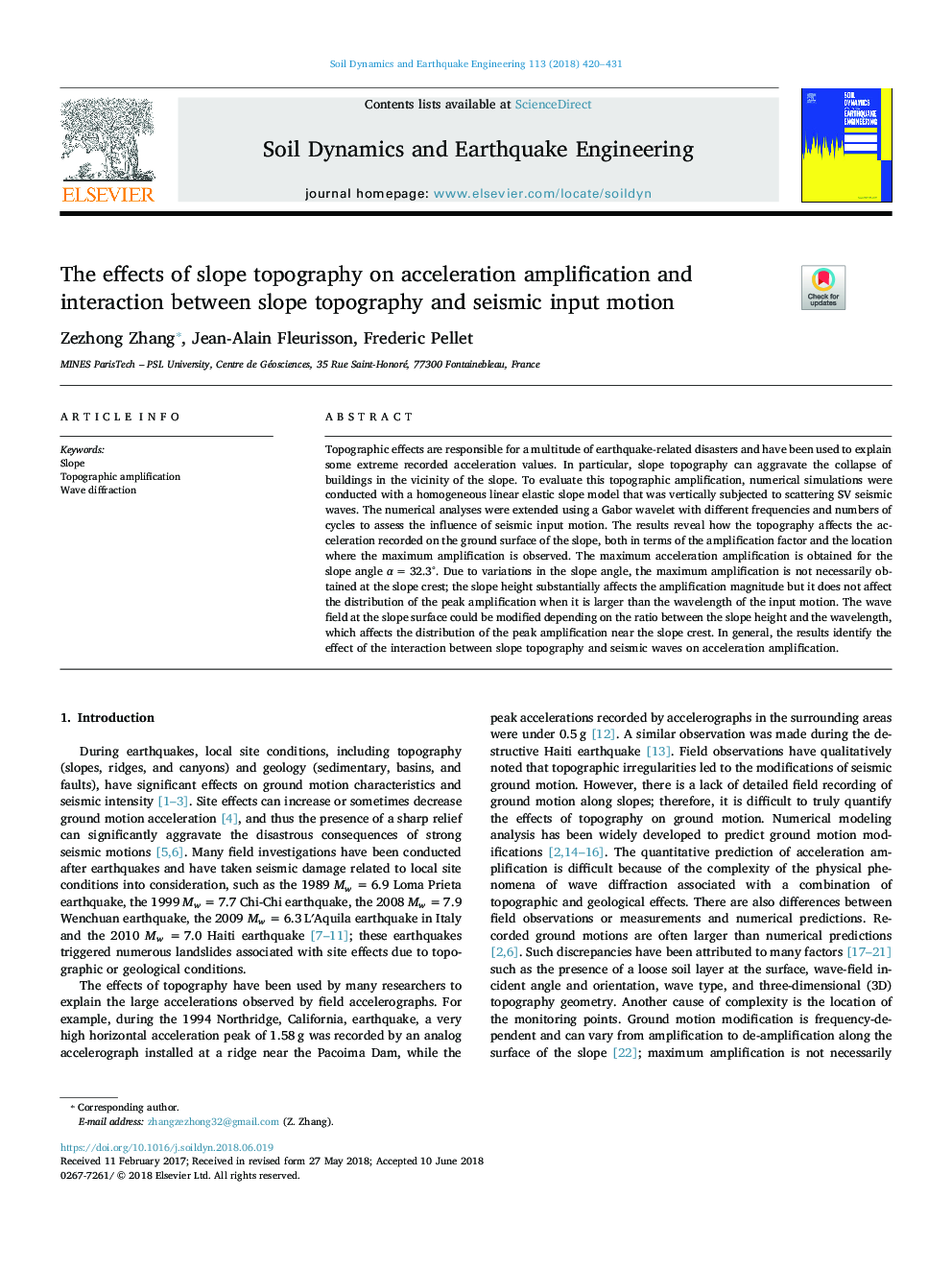| Article ID | Journal | Published Year | Pages | File Type |
|---|---|---|---|---|
| 6770130 | Soil Dynamics and Earthquake Engineering | 2018 | 12 Pages |
Abstract
Topographic effects are responsible for a multitude of earthquake-related disasters and have been used to explain some extreme recorded acceleration values. In particular, slope topography can aggravate the collapse of buildings in the vicinity of the slope. To evaluate this topographic amplification, numerical simulations were conducted with a homogeneous linear elastic slope model that was vertically subjected to scattering SV seismic waves. The numerical analyses were extended using a Gabor wavelet with different frequencies and numbers of cycles to assess the influence of seismic input motion. The results reveal how the topography affects the acceleration recorded on the ground surface of the slope, both in terms of the amplification factor and the location where the maximum amplification is observed. The maximum acceleration amplification is obtained for the slope angle αâ¯=â¯32.3°. Due to variations in the slope angle, the maximum amplification is not necessarily obtained at the slope crest; the slope height substantially affects the amplification magnitude but it does not affect the distribution of the peak amplification when it is larger than the wavelength of the input motion. The wave field at the slope surface could be modified depending on the ratio between the slope height and the wavelength, which affects the distribution of the peak amplification near the slope crest. In general, the results identify the effect of the interaction between slope topography and seismic waves on acceleration amplification.
Related Topics
Physical Sciences and Engineering
Earth and Planetary Sciences
Geotechnical Engineering and Engineering Geology
Authors
Zezhong Zhang, Jean-Alain Fleurisson, Frederic Pellet,
